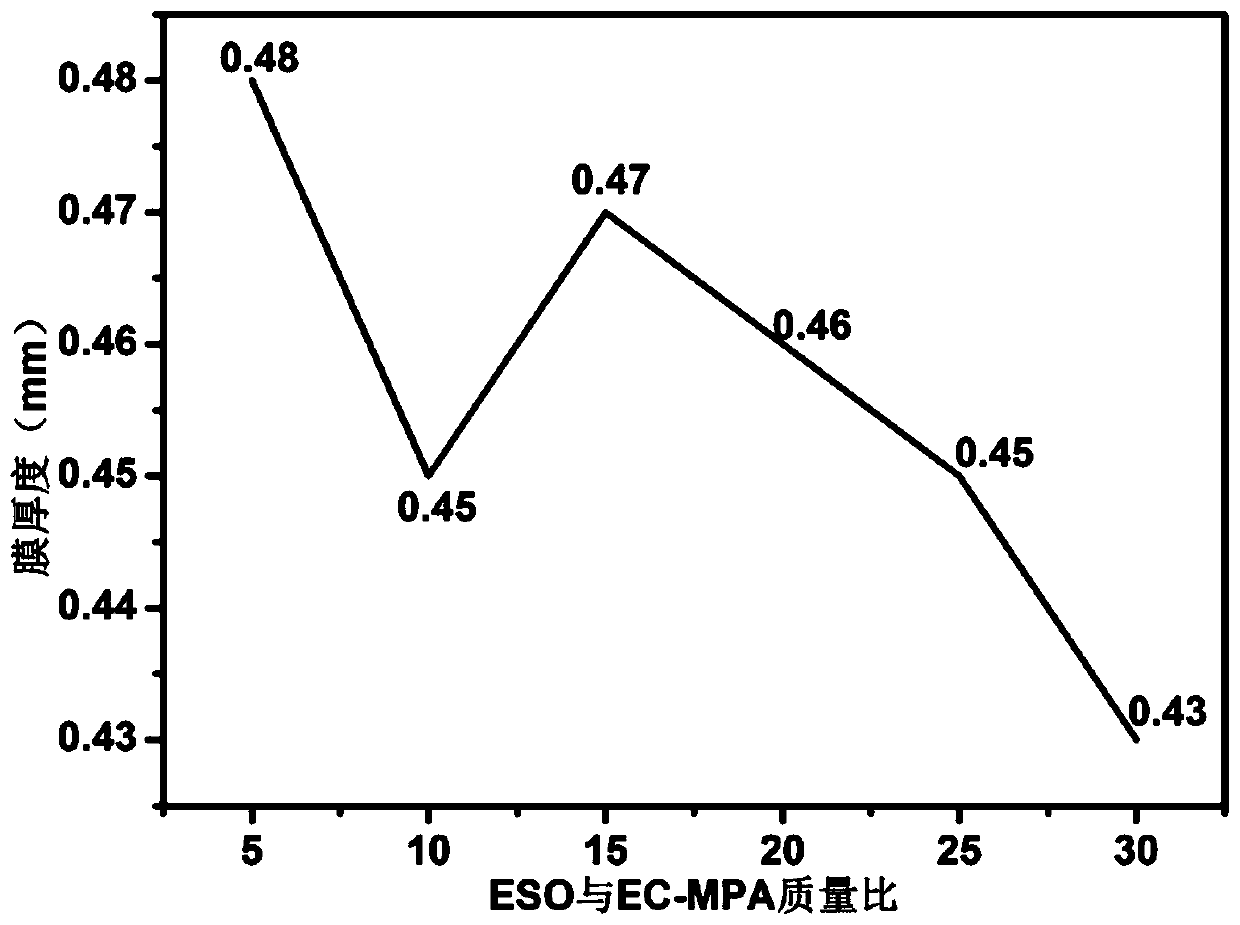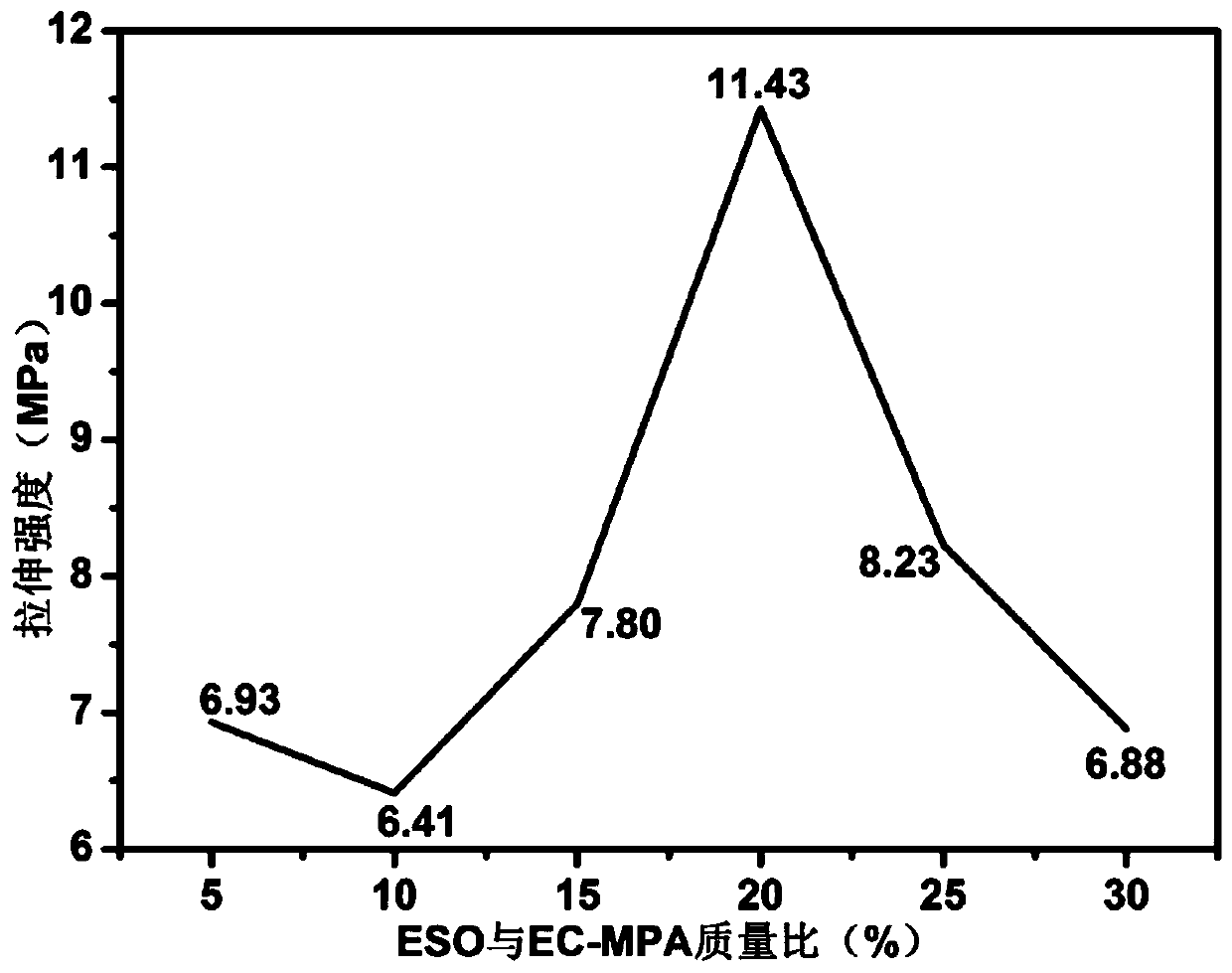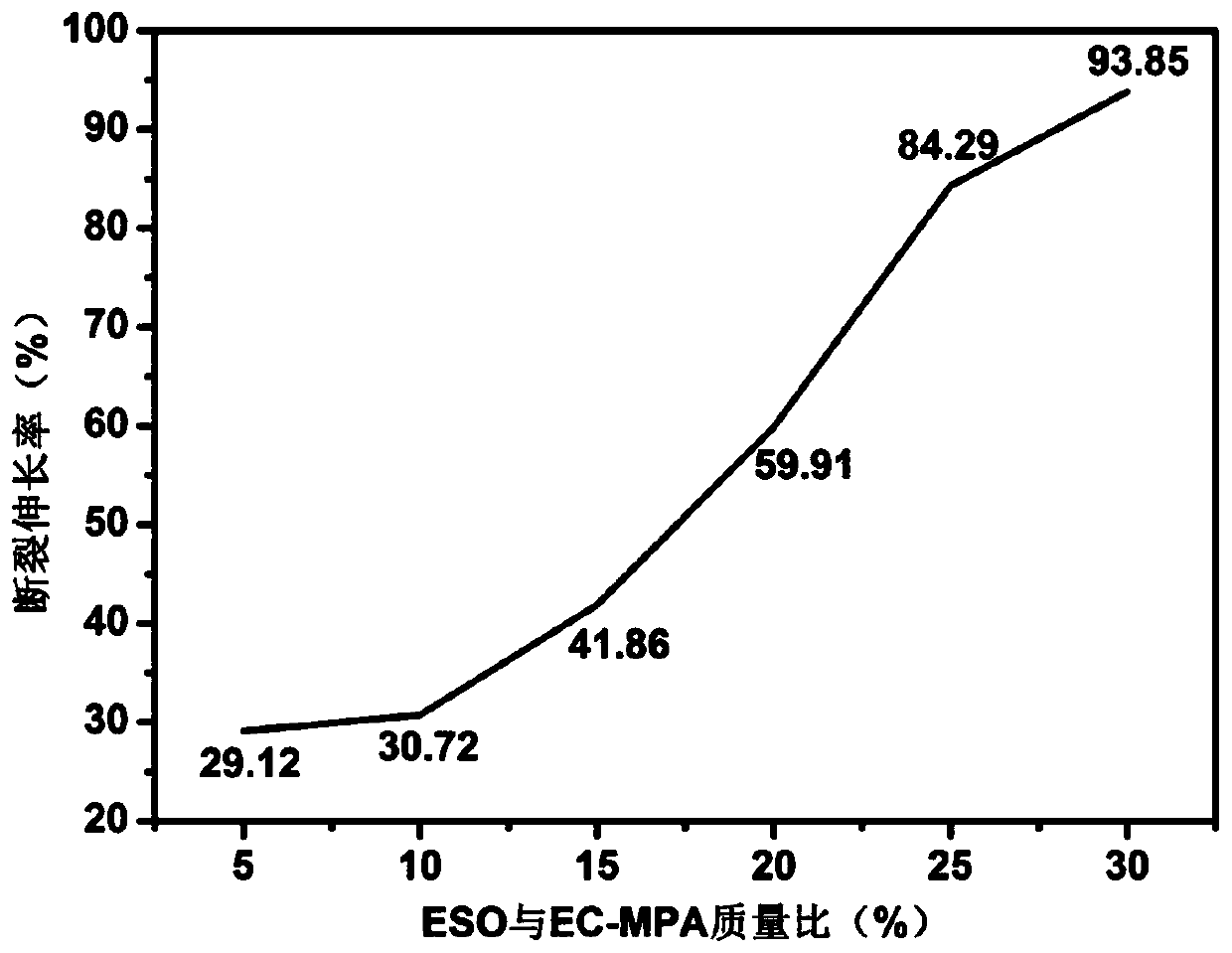Epoxidized soybean oil rosin-cellulose-based polymer blend membrane and preparation method and application thereof
A technology based on epoxy soybean and cellulose, which is applied in the direction of chemical instruments and methods, luminescent materials, etc., to achieve the effect of high strength and large molecular weight of EC
- Summary
- Abstract
- Description
- Claims
- Application Information
AI Technical Summary
Problems solved by technology
Method used
Image
Examples
Embodiment 1
[0023] In the first step, add maleopimaric anhydride (MPA) and oxalyl chloride in a molar ratio of 1:1.3 into a reactor equipped with 40-80 mL (the amount added is for the purpose of completely dissolving the solid reactant) tetrahydrofuran (THF) as a solvent , carry out acid chlorination at a temperature of 50° C., and use a rotary evaporator to remove excess oxalyl chloride to obtain MPACl.
[0024] In the second step, MPACl was dissolved in THF according to 1g / 10mL, and was dropped into a solution dissolved with 12.3g EC (0.05mol), 6.5g DMAP (about 105% of EC) and THF (the EC added in the solution The ratio of the mass of THF to the volume of THF is 0.5 / mL), and the temperature is slowly raised to 40° C. for 5 hours. After the reaction, cool to room temperature, centrifuge the reaction mixture twice, pour the supernatant into excess distilled water (the amount of distilled water added is advisable to precipitate a large amount of product), and stir with a glass rod until co...
Embodiment 2
[0027] In the first step, add maleopimaric anhydride (MPA) and oxalyl chloride in a molar ratio of 1:1.3 into a reactor equipped with 40-80 mL (the amount added is for the purpose of completely dissolving the solid reactant) tetrahydrofuran (THF) as a solvent , carry out acid chlorination at a temperature of 50° C., and use a rotary evaporator to remove excess oxalyl chloride to obtain MPACl.
[0028] In the second step, MPACl was dissolved in THF according to 1g / 10mL, and was dropped into a solution dissolved with 12.3g EC (0.05mol), 6.5g DMAP (about 105% of EC) and THF (the EC added in the solution The ratio of the mass of THF to the volume of THF is 0.5 / mL), and the temperature is slowly raised to 40° C. for 5 hours. After the reaction, cool to room temperature, centrifuge the reaction mixture twice, pour the supernatant into excess distilled water (the amount of distilled water added is advisable to precipitate a large amount of product), and stir with a glass rod until co...
Embodiment 3
[0031]In the first step, add maleopimaric anhydride (MPA) and oxalyl chloride in a molar ratio of 1:1.3 into a reactor equipped with 40-80 mL (the amount added is for the purpose of completely dissolving the solid reactant) tetrahydrofuran (THF) as a solvent , carry out acid chlorination at a temperature of 50° C., and use a rotary evaporator to remove excess oxalyl chloride to obtain MPACl.
[0032] In the second step, MPACl was dissolved in THF according to 1g / 10mL, and was dropped into a solution dissolved with 12.3g EC (0.05mol), 6.5g DMAP (about 105% of EC) and THF (the EC added in the solution The ratio of the mass of THF to the volume of THF is 0.5 / mL), and the temperature is slowly raised to 40° C. for 5 hours. After the reaction, cool to room temperature, centrifuge the reaction mixture twice, pour the supernatant into excess distilled water (the amount of distilled water added is advisable to precipitate a large amount of product), and stir with a glass rod until com...
PUM
 Login to View More
Login to View More Abstract
Description
Claims
Application Information
 Login to View More
Login to View More - R&D
- Intellectual Property
- Life Sciences
- Materials
- Tech Scout
- Unparalleled Data Quality
- Higher Quality Content
- 60% Fewer Hallucinations
Browse by: Latest US Patents, China's latest patents, Technical Efficacy Thesaurus, Application Domain, Technology Topic, Popular Technical Reports.
© 2025 PatSnap. All rights reserved.Legal|Privacy policy|Modern Slavery Act Transparency Statement|Sitemap|About US| Contact US: help@patsnap.com



